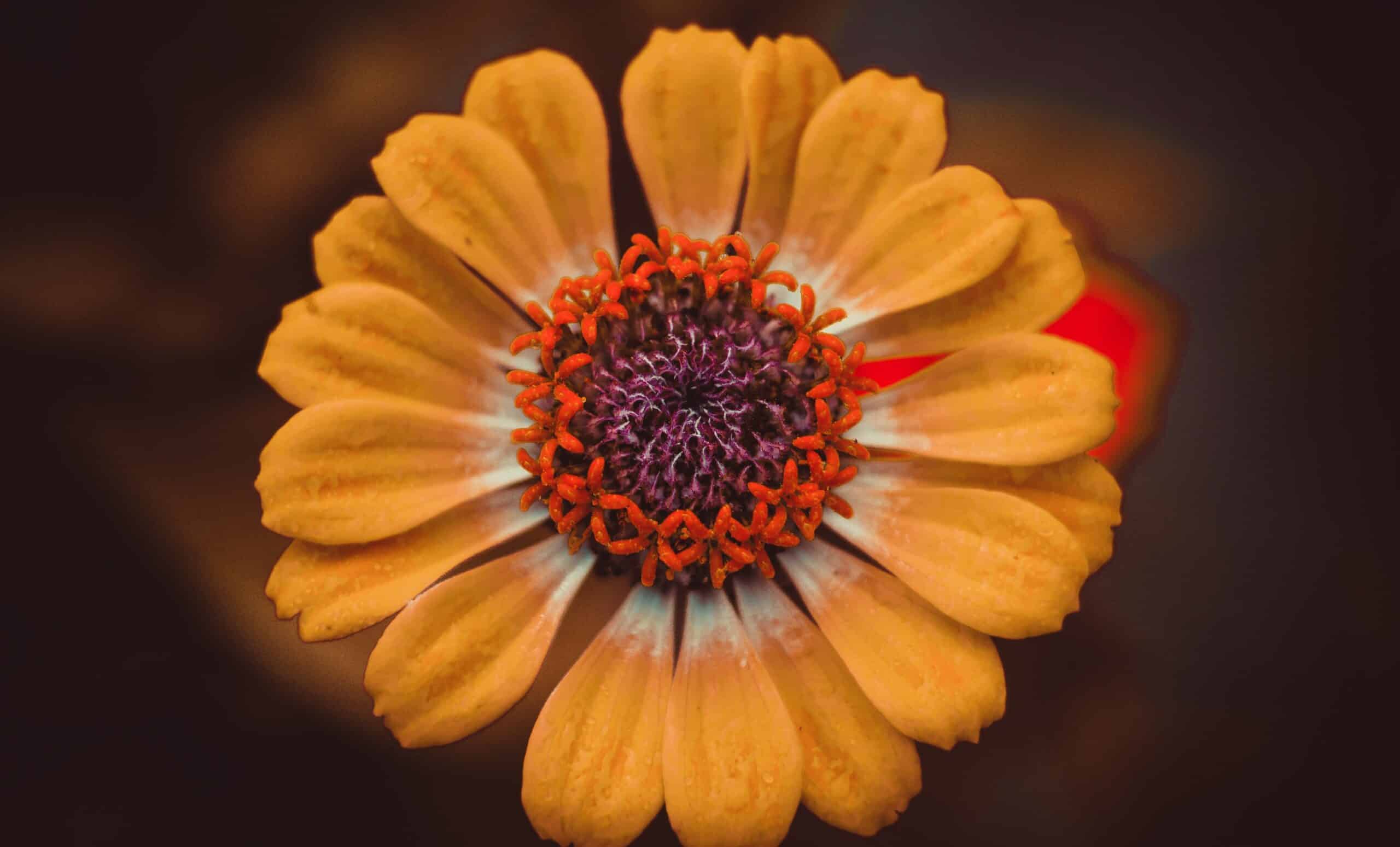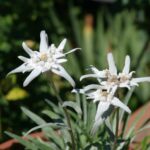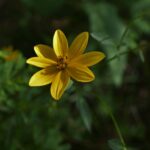Calendula, often referred to as “pot marigold,” is a vibrant, cheery flower that has been known for centuries for its medicinal and culinary properties. Calendula’s bright yellow and orange petals have symbolized prosperity and joy throughout the ages. It is not only an attractive addition to any garden, but it is also easy to grow and care for.
In this article, we will explore the many benefits of growing calendula in your garden. From its cheerful appearance to its medicinal qualities, this flower is sure to bring joy and beauty to any outdoor space. We will discuss how to plant, grow, harvest, and store your calendula blossoms. Finally, we’ll cover some of the fascinating ways you can use them in cooking and herbal healing.
For those looking for a beautiful addition to their home or garden, calendula may be just what you’re looking for! With its cheerful colors, health benefits, and versatile uses in both cooking and medicine-making; it’s no wonder that this ancient flower has been loved by generations past. Read on to learn more about how you can start growing your own pot marigolds today!
What Is Calendula (Pot Marigold)?
Could it be true that growing and using Calendula (or Pot Marigold) is a nurturing, rewarding process? After all, the flower has been used for centuries to heal wounds and bruises. To answer this question, and determine how best to grow and care for Calendula, I consulted with specialists in botany and gardening to provide an expert-level overview of this beautiful flower.
First off, what exactly is Calendula? It’s a member of the daisy family that ranges from yellow to orange in color. The petals are edible too! As an annual plant, Calendula blooms from late spring through fall. This makes it an ideal choice for those looking for extended color in their garden. When grown from seed, Calendula flowers typically reach maturity after about eight weeks.
Calendula does have some basic needs when it comes to planting and care. The plant prefers well-drained soil that is slightly acidic or alkaline (pH 6-7). It should be placed in full sun or partial shade with plenty of space between individual plants because overcrowding can lead to disease issues. Water regularly but avoid over-watering as this can cause root rot. Fertilize sparingly as too much fertilizer will stunt flowering growth. Finally, deadhead spent flowers regularly to promote continued blooming throughout the growing season.
In sum, successfully growing and caring for Calendula requires attention to its basic needs while providing plenty of sunlight and water throughout the growing season. With just a little effort you can make sure your Pot Marigolds thrive all summer long!
Where To Plant Calendula
Calendula (pot marigold) is a beautiful and vibrant flower that can bring a bright splash of color to any garden. For example, one of my clients was looking for something to add to their garden that would bring joy into their yard. With its cheerful yellow-orange hues, calendula fit the bill perfectly.
When it comes to planting calendula, it’s important to choose the right spot in your garden. Calendula does best in full sun and well-drained soil—loam or sandy soils are ideal. It will also benefit from mulching around the base of the plant to help keep weeds at bay and keep moisture locked in. Additionally, be sure not to plant calendula too close together as overcrowding can invite fungal diseases.
It’s always important to pay attention to when you’re planting your calendula so that you get optimal growth and bloom. Depending on where you live, timing can vary; however, most people opt for spring or early summer planting when daytime temperatures are above 60°F (15°C). Once planted, water regularly until established, then water only during periods of drought or heat stress. With proper care and attention, you’ll soon be enjoying an explosion of colorful blooms!
When To Plant Calendula
When it comes to planting calendula, timing is everything. Botanically known as Calendula officinalis, pot marigold is a hardy annual that typically blooms in late spring and early summer. To ensure ample blooms throughout the season, you’ll want to get your calendula started early. Depending on where you live, this may mean as early as late winter or mid-spring.
If you’re starting your calendula from seed indoors, sow the seeds four to six weeks before your last expected frost date. If you’re planting outdoors directly into the ground, wait until all danger of frost has passed before sowing. In most cases, this means waiting until after the last day of April for gardeners in USDA Hardiness Zones 3 through 7. For warmer climates (Zone 8 and higher), February or March would be suitable for planting calendula outdoors.
Planting calendula at the proper time will give you a jump start on growing beautiful yellow and orange flowers that are sure to brighten up any garden setting! When planted in full sun with well-draining soil, these cheerful flowers will reward gardeners with plenty of color throughout their season-long bloom time—all without needing much maintenance or care.
How To Plant Calendula
“Where there’s a will, there’s a way” – this proverb is especially true when it comes to gardening. Planting calendula can be an easy and rewarding experience for first-time gardeners and experienced botanists alike. Let’s explore the ins and outs of planting calendula in your own garden.
First, you’ll need to choose a location that gets at least six hours of direct sunlight a day. Calendula thrives best in sunny spots – if you’re planting them indoors, make sure the spot gets plenty of bright light. When selecting soil, use something with good drainage: sandy loam or gritty clay soils are great choices.
Next, it’s time to get planting! If you’re starting from seed, sow them directly into the ground (or containers) and lightly cover with soil. Make sure to keep the seeds moist by watering regularly until they begin to sprout. If you’re using transplants instead, dig holes about four inches deep and space about eight inches apart – then gently place each transplant into its hole and fill in around it with soil.
Finally, give your newly planted calendula a good drink of water to help settle their roots into the soil. With proper care and attention – including regular weeding and mulching – your calendula should start producing beautiful blooms in no time!
Caring For Calendula
Caring for calendula is a key factor in the success of its growth. This plant is fairly easy to care for and maintain, but there are a few important steps you should take to ensure its optimum health. First, it’s important to keep an eye on the water intake of your calendula plants. As with all flowers, they need adequate hydration in order to thrive. Secondly, monitor the amount of sunlight your calendula receives each day. While too much sun can cause wilting, not enough can lead to stunted growth and lack of bloom production. Lastly, be sure to remove any dead or withered flowers as soon as possible. This will encourage new blooms and help keep your plants looking their best.
It’s also important that you regularly check the soil around your calendula plants for weeds and pests; both can be detrimental to the health of the plant if left unchecked. Additionally, fertilizing every few weeks will provide essential nutrients needed for healthy growth and flower production. When it comes time to harvest your calendula flowers, take extra care when snipping stems off at the base – this will help prevent damage and allow future blooms to come out easily.
Watering your calendula correctly is another critical part of caring for them correctly. Depending on the season and climate you live in, adjust the frequency accordingly – usually once or twice per week should be sufficient – ensuring that you don’t over-saturate them either! Deep soaking rather than frequent light watering ensures that the roots are able to absorb all of their necessary nutrients from the soil effectively. And lastly, mulching around your plants helps retain moisture in hot summer months; just be sure not to pile it too high! Taking these small steps will go a long way towards keeping your calendula healthy and happy!
Watering Calendula
Watering calendula is an important part of caring for this flower. It may seem obvious, but it’s easy to overlook, and can be the difference between a healthy plant and one that struggles to thrive. While some people think that all plants need lots of water, this isn’t always the case for calendula.
Specialists in botany and gardening recommend watering calendula deeply once a week, rather than lightly every day. This helps to encourage strong root growth and prevent disease, as well as promoting lush foliage. During hot weather or if your plant is in direct sunlight, you may want to increase watering frequency slightly. Just make sure that the soil drains well and remains moist but not soggy at all times.
It’s also important not to overwater your calendula plants as this can lead to root rot and other diseases. If you are concerned about whether or not your plants need additional water, look for signs such as wilted leaves or yellowed foliage – these will indicate when they need more hydration. Remember that providing adequate drainage is key to successful watering!
Having established proper watering practices for calendula, we now turn our attention to fertilizing these lovely flowers…
Fertilizing Calendula
Fertilizing is an important part of caring for calendula plants. It’s essential to providing them with the nutrients they need to grow and thrive. As a specialist in botany and gardening, I recommend using organic fertilizers when possible. Organic fertilizers are preferable because they provide necessary nutrients for the plant without causing any long-term harm or damage to surrounding soil. Additionally, organic fertilizers help improve soil structure, which helps promote healthy root growth.
The best time to fertilize calendula plants is at the start of its growing season. This will ensure the plant has access to all the necessary nutrients for its growth and blooming process. A balanced fertilizer with equal parts nitrogen, phosphorus, and potassium is ideal for calendula plants as it provides them with all the nutrients needed for healthy growth. It’s also important to follow the directions on your particular fertilizer product to avoid over-fertilizing or under-fertilizing your plants as this can cause adverse effects such as stunted growth or wilting leaves.
When applying fertilizer, it’s important to spread it evenly over the entire area of your calendula plants so that each plant has access to its share of nutrients. Additionally, water generously after applying fertilizer and always keep an eye out for signs of nutrient deficiency such as yellowing leaves or slow growth rates. Taking these steps will help ensure your calendula plants receive optimal care and remain healthy throughout their life cycle. With proper care, you can look forward to vibrant blooms year after year!
With proper fertilization in place, it’s time to focus on controlling weeds in your calendula garden bed or container garden next.
Controlling Weeds In Calendula
Weeds can be the bane of any gardeners’ existence, but luckily there are some simple steps you can take to keep them at bay. Like with most gardening tasks, prevention is key when it comes to dealing with weed infestation in calendula. A good old-fashioned hoeing should do the trick for smaller plots. If you have a larger area, using an herbicide may be your best bet.
No matter which method you choose, make sure to follow label instructions and only use products that are approved for use on edible flowers like calendula. Additionally, mulching around the plants is a great way to prevent weeds from taking hold in the first place. Not only does it help keep out those pesky weeds, but it also helps conserve moisture and keeps your soil temperature regulated during extreme weather conditions.
When using herbicides, always be sure to wear protective gear like gloves and a face mask so you don’t run into any health issues while controlling weeds in calendula. TIP: If you’re looking for an organic solution, consider planting companion plants like onions or garlic around your calendula bed as they can naturally deter weed growth and even add some additional nutrition to the soil!
Dealing With Pests In Calendula
Growing and using calendula is a great way to bring a bright splash of color to the garden. Did you know calendula can have up to 15 blooms per stem? With a little care and attention, you can get the most out of your calendula plants. In this article, we’ll look at how to deal with pests in calendula.
The first step in dealing with pests in calendula is prevention. To do this, start by choosing pest-resistant varieties. Regularly inspect the plants for signs of damage and keep an eye out for symptoms such as yellowing leaves or wilting stems. Additionally, encourage beneficial insects like ladybugs and lacewings that feed on pests like aphids and spider mites.
If you do find yourself dealing with pests, there are several methods you can use:
- Physical removal: You can manually remove small infestations by handpicking the pests off the plant or using a vacuum cleaner or water sprayer to dislodge them from the foliage.
- Biological controls: Introducing natural predators such as parasitic wasps or introducing predatory mites into your garden can help control pest populations without harming beneficial insects or pollinators.
- Chemical controls: If all else fails, chemical pesticides such as insecticidal soaps or botanical oils may be necessary to eradicate a severe infestation. Remember to always follow label instructions when using any type of pesticide.
No matter which method you choose, it’s important to act quickly and consistently when dealing with pests in calendula – otherwise, it could be too late to save your plants!
Deadheading Calendula
Deadheading calendula is an essential step in the process of growing and caring for these stunning flowers. Not only does it make them look better, but it also encourages new blooms and keeps plants healthy. When deadheading, you’ll want to remove the spent flower heads as soon as they begin to fade. This helps the plant to put its energy into producing more flowers instead of developing seeds. It’s best to use a sharp pair of gardening scissors for this task.
To ensure that your calendula are flowering at their best, you’ll need to do some regular deadheading. Start by cutting off any faded or discolored blooms, being sure not to leave any behind on the plant. If left unattended, these will produce seeds which take away from the plant’s energy production and can cause overcrowding in your garden beds. You should also keep an eye out for buds that don’t open and remove those before they can turn into flowers.
Once you’ve removed all of the old flower heads from your calendula plants, you’ll be ready to enjoy their new blooms! Deadheading may seem like a tedious chore at first, but with regular maintenance you’ll be rewarded with a beautiful display of vibrant colors throughout the season. Plus, you won’t have to worry about overcrowding or wasting energy on seed production!
Harvesting Calendula
Harvesting calendula is an important step in caring for the plant, as it ensures that the flowers will reach their full potential and can be used to their greatest benefit. To ensure a bountiful harvest of this beautiful flower, there are a few simple steps to follow:
- Carefully cut stems with flowers or leaves attached near the base of the plant.
- Keep an eye out for wilting flowers and deadhead them to encourage further blooming and prevent over-seeding of the garden space.
- Collect flowers or leaves throughout the growing season as needed or desired.
Knowing when to harvest calendula is just as important as how to do it. The amount you collect should depend on your specific needs and preferences, but generally speaking, harvesting should be done when the petals are just beginning to open and before they turn brown at the tips. If you’re looking for fresh flowers for a bouquet, collecting from multiple plants will give you more uniform blooms rather than a single stem from one plant that may not have opened yet or be too far past its prime. For use in natural remedies, leaves should be collected closer to maturity when they have reached their highest potency – usually about 4 weeks after planting for annual varieties, or 6 weeks for perennials.
Harvesting calendula also provides an opportunity to clean up any overgrown plants in your garden space to make room for other plants or new growth during subsequent seasons. With proper care and attention, successful harvesting results in high quality calendula that can be used effectively in recipes, teas, salves, and other herbal preparations – providing a wealth of benefits while beautifying gardens around the world! With this knowledge under your belt, you’ll be ready move on to storing calendula…
Storing Calendula
Once calendula is harvested, it should be stored for future use. Storing calendula correctly will extend its shelf life and its therapeutic benefits. There are two primary methods to store calendula – drying or freezing.
When drying, the flowers should be laid out in a single layer on a flat surface away from direct sunlight. The flowers should be turned periodically to ensure they dry evenly and quickly. Once the petals have dried, they can be stored in an airtight container such as a jar or bag. To preserve their medicinal properties, add some lavender essential oil to the container before securely closing it.
Freezing is another option for storing calendula. This method involves freezing either the petals or entire flower heads on a baking sheet until frozen solid, then moving them into an airtight container such as a freezer bag or jar. Freezing helps preserve the potency of the plant’s medicinal properties while still maintaining flavor and color when used in recipes.
Calendula can be stored for up to a year using either of these methods, making it highly versatile for culinary and medicinal uses alike. With proper storage techniques, you can enjoy this fragrant herb season after season!
Common Uses For Calendula
Calendula, also known as pot marigold, has numerous uses. As a botanist and gardener, I can attest to its versatility. Calendula is most commonly used for culinary and medicinal purposes.
The petals of calendula are edible and often used as a garnish or in salads for their bright color. In addition, calendula petals can be dried and used in tea blends or added to soups for flavor. Furthermore, the flowers contain antimicrobial properties that make them excellent additions to natural home remedies such as salves and tinctures.
Calendula also has many decorative uses in the garden or around the home. The cheery blooms provide bold color throughout the growing season and make excellent cut flowers as well. They’re also popular as companion plants since they attract beneficial insects while repelling pests from other crops. Next, we’ll take a look at companion planting for calendula—a great way to grow this beautiful flower with success!
Companion Planting For Calendula
When it comes to gardening, companion planting is an important part of any successful garden. Calendula, or pot marigold, is no exception. Planting companions for calendula can help improve the overall health and productivity of the flower. To start off your calendula garden, let’s take a look at some of the best companion plants for this beautiful flower.
One of the most popular companions for calendula is borage. This herbaceous plant has many beneficial properties that are known to enhance the health and growth of other plants in its vicinity. Borage also helps attract pollinators such as bees and butterflies to your garden. Another great companion plant for calendula is garlic. The strong scent released by garlic helps keep away unwanted pests that may harm your calendula plants.
Finally, one of the best companion plants for calendula is nasturtiums. This flowering plant adds vibrant color to your garden while also helping increase the amount of nutrients available to your calendula plants through its deep root system. Nasturtiums are also known to have antifungal properties which can help reduce any fungal diseases that may affect your calendula plants.
Given these benefits, it’s easy to see why companion planting with calendula should be a priority for any gardener looking to create a healthy and thriving garden environment for their pot marigolds! Now let’s move on to discussing some of the common varieties of calendula available today…
Common Varieties Of Calendula
Calendula, or pot marigold, is an incredibly versatile and beautiful flower. There are many varieties of this species available to gardeners, each boasting its own unique traits. In this article, we’ll discuss some of the most popular types of calendula.
The most common type of calendula is known as Calendula officinalis which has large yellow-orange flowers. This variety grows in both sunny and partly shady locations with moist soil and requires little maintenance once established. Another popular variety is Calendula arvensis which features small white flowers and prefers a sunny location with well-drained soil. If you’re looking for something a bit more unusual, try Calendula stellata which has star-shaped petals in an array of colors from yellow to deep red.
No matter what type you choose, calendula can be a great addition to your garden! With its bright blooms providing color throughout the growing season, calendula will also attract beneficial insects like bees and butterflies to your garden. Their hardy nature makes them easy to care for, so even novice gardeners can enjoy the beauty that these flowers provide!
Frequently Asked Questions
Is Calendula A Fragrant Flower?
No, calendula (pot marigold) is not a fragrant flower. While its bright and cheerful blooms are lovely to look at, the flowers lack scent. This makes sense, given that calendula belongs to the Asteraceae family, which typically doesn’t produce fragrant flowers. With that said, there are some varieties of calendula that may be more aromatic than others.
In terms of growing and caring for calendula, it’s a fairly easy plant to take care of. It prefers full sun or part shade and moist soil with good drainage; however, most types can tolerate some drought as well. When planting this annual flower in your garden, make sure to give it plenty of space between other plants so they have room to grow and spread out. It’s also important to deadhead spent blooms regularly in order to encourage continuous blooming throughout the summer months.
Calendula is a great addition to any garden or outdoor space because of its bright colors and low-maintenance requirements. With proper care, you’ll be able to enjoy its cheery blooms all season long without needing too much effort on your part!
How Long Does It Take For Calendula To Grow?
If you are looking to add a splash of color to your garden, calendula is the perfect choice! These beautiful flowers come in many shades of yellow and orange, bringing life and vibrancy to any outdoor space. But when it comes to planting these flowers, one question remains: how long does it take for calendula to grow?
For all those looking to successfully cultivate calendula in their gardens, the good news is that this flower isn’t overly demanding when it comes to its growing needs. In fact, with the right conditions and a bit of patience, you can expect these flamboyant blooms within 6-8 weeks after sowing.
Though it may be tempting to jump right into planting without doing any preparation work, taking some extra steps before sowing can greatly improve your success rate. Make sure your soil is well drained and light by adding compost or aged manure. Water regularly and make sure not to over-fertilize as this can lead to an abundance of foliage but fewer flowers. With these simple tips in mind, you will be rewarded with gorgeous calendula blooms in no time!
How Often Should Calendula Be Fertilized?
Fertilizing calendula (pot marigold) is key to getting the most out of this beautiful flower. Think of it like providing a multivitamin for your plant – with proper nutrition, you’ll enjoy blooms that last longer and are more vibrant! Here’s how to get the job done right.
First off, you’ll want to pick a fertilizer specifically designed for flowers – something like an all-purpose 10-10-10 or 5-10-5 mixture. Then, decide on how often you should fertilize. As a general rule of thumb, applying fertilizer once every two weeks during its growing season should be sufficient. However, if you notice the plant looking a bit dull or not producing many blossoms, then bump up the fertilization schedule to weekly intervals.
Once you’ve got your fertilizer and schedule sorted out, it’s time to get down to business! Start by mixing the nutrient solution according to package instructions – then use either a watering can or spray bottle to apply it directly onto the soil in an even pattern around the base of the plant. Make sure not to overdo it though – too much fertilizer can burn and damage your calendula!
TIP: If possible, try using organic fertilizers when feeding your calendula plants – they provide slow-release nutrition that won’t shock or overwhelm them with nutrients. With some patience and regular fertilizing, this flower will reward you with plenty of beautiful blooms over time!
What Is The Best Way To Store Calendula?
When considering how to store calendula (pot marigold), it is important to first understand the properties of this unique flower. Calendula has a high water content, making its petals fragile and prone to wilting. This means that its flowers need to be handled with care and stored in an environment where they can retain their moisture.
The best way to store calendula is in a cool, dark place away from direct sunlight. If you plan on keeping the petals intact, place them in an airtight container such as a jar or a sealed bag. These containers should also be lined with something absorbent like paper towels or cloth, which will help maintain the moisture in the flowers. Additionally, you can also wrap the calendula petals individually in wax paper or cling wrap for extra protection against moisture loss.
Storing calendula correctly will help ensure that it remains fresh and vibrant for longer periods of time. With proper handling and storage techniques, you can enjoy these beautiful flowers for weeks or even months after harvesting them!
Are There Any Special Requirements For Calendula In Colder Climates?
Calendula, or pot marigold, is like a ray of sunshine in the garden. It’s cheerful yellow and orange blooms can be relied upon to bring life and colour to any outdoor space. But what special requirements should be taken into account when growing calendula in colder climates?
First, consider the planting site. Calendula prefers well-draining soil which has been amended with some organic matter such as compost or aged manure. In harsher climates, you may want to choose a slightly sunnier spot than would normally be recommended and also choose a variety that has been specifically bred for cold weather tolerance.
Once planted, calendula needs regular watering during dry periods. Mulch around the plant to help retain moisture and keep weeds at bay. Deadheading the spent blooms will encourage more flowers to bloom throughout the season and should prolong flowering until frost arrives (although many varieties are actually frost hardy).
Finally, if you live in an area where temperatures drop below freezing during winter months, it is best to pull up your calendula plants at the end of the season and discard them rather than trying to over-winter them outdoors – they won’t like it! If you’d like to overwinter them indoors, dig up the root clump before frost and pot it up with fresh potting mix. Keep the plant on a bright windowsill over winter for blooms in springtime.
Conclusion
The Calendula is a beautiful and versatile flower that can be used in many ways. With the right care and attention, this fragrant bloom can last through spring, summer and fall. With proper fertilization, watering and storage, you can enjoy the delicate beauty of these flowers for years to come.
The Calendula is an easy flower to grow that provides a lot of rewards with little effort! It has a long blooming season making it ideal for gardeners of all skill levels. Special requirements may need to be met if planting in colder climates but with some extra preparation, this flower will thrive even then.
In conclusion, the Calendula is a wonderful addition to any garden or patio that offers vibrant color and fragrance. With just a bit of maintenance, you can reap the sweet rewards of this magnificent flower for many seasons like a pot of gold at the end of the rainbow!





























